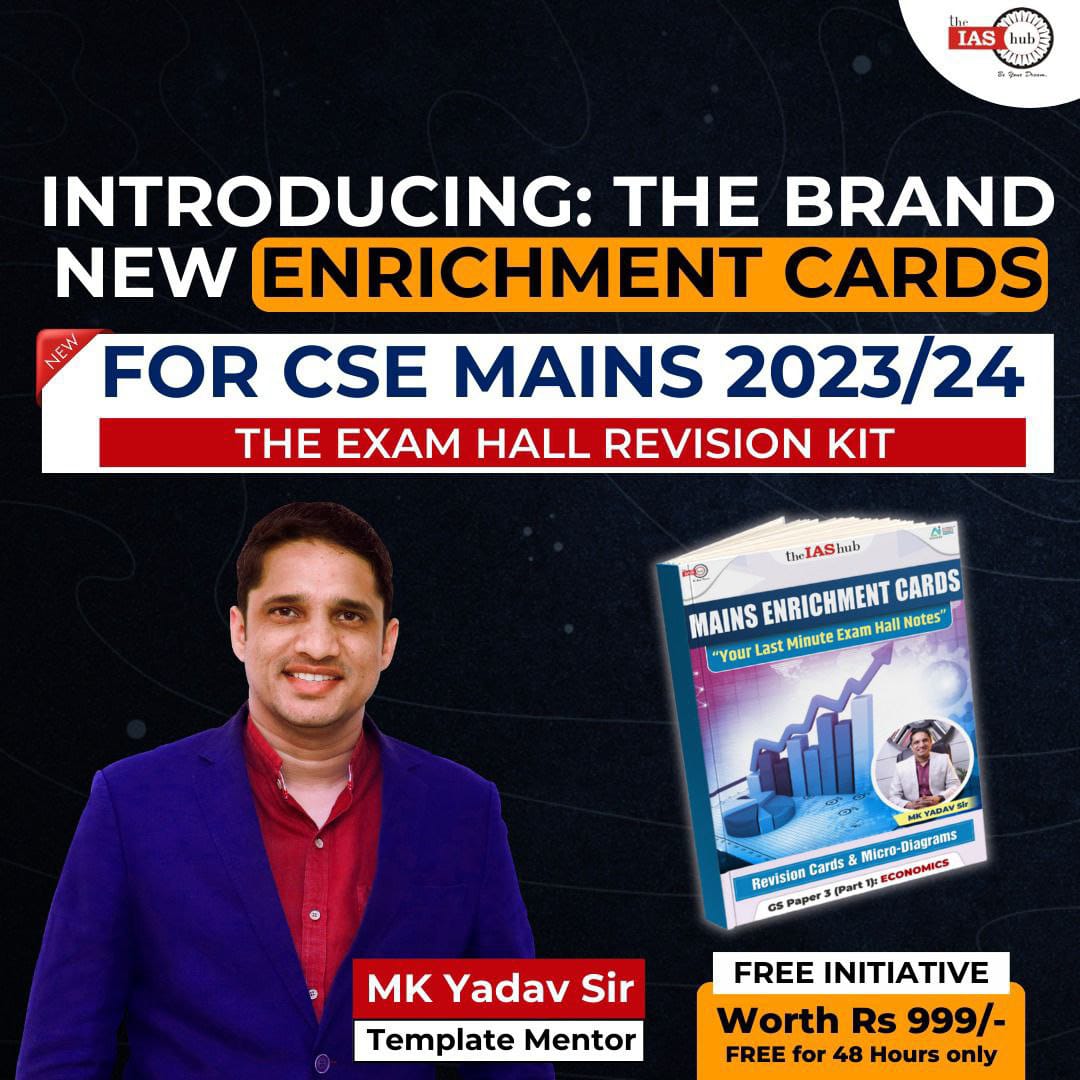Government Budget is Annual Financial Statement that explains estimated receipts and expenditure in a financial year. It is mandated by Article 112 to be presented in the Lok Sabha


INTRODUCTION:
|
Budget:Constitutional Aspect |
Government Budget is Annual Financial Statement that explains estimated receipts and expenditure in a financial year. It is mandated by Article 112 to be presented in the Lok Sabha. |
|
Union Budget 2023-24 |
With SAPTRISHI and 4 transformative opportunities viz, Women Empowerment through SHGs; PM VIKAS; Tourism Promotion; Green Growth - the Budget 2023-24, laid strong foundation of empowered and inclusive economy in Amrit Kal (2023-2047). |
|
Gender Budgeting |
|
|
FORMULA BY theIAShub |
Government Budgeting = National priorities + Developmental Roadmap + Social Welfare Effective Budgeting = Effective Revenue Collection + Transparent & Balanced Allocation + Effective Resource Management + Fiscal Responsibility |
SPEECH BY PROMINENT PERSONALITIES (PM, PRESIDENT, UN OFFICIAL et. al)/RECOGNITION IF ANY:
CURRENT DEVELOPMENT: HIGHLIGHTS OF BUDGET 2023-24
DATA/FACT:
|
Taxpayers |
|
|
Tax to GDP Ratio |
|
|
Tax Revenues (2022-23) |
Overall tax collection in 2022-23: Rs 30 lakh crore (Direct Tax: 52%; Indirect Tax: 48%)
|
|
Govt expenditure [Budget 2023–24] |
Total Government Expenditure: 15% of GDP Capital expenditure: 3% of GDP (highest ever Capex of 10 Lakh Cr.). |
|
Exp. on Subsidies |
2% of GDP (Union Budget 2023-24) ->Food Subsidy: 2 Lakh cr; Fertliser Subsidy: 1.75 lakh cr |
|
Budget Deficit Target (FY24) (% of GDP) |
|
|
Disinvestment Target (2023-24) |
₹51,000 Crore (Target met only 2 times in last 10 yrs (2017-18 & 2018-19) |
KEYWORDS:
COMMITTEES RECOMMENDATIONS/NATIONAL OR INTERNATIONAL REPORTS:
GOVT SCHEMES, POLICIES, AND INITIATIVE:
EXAMPLES/CASE STUDIES:
CONCLUSION
LOW EQUILIGRIUM TRAP

FISCAL CONSOLIDATION: FISCAL MARKSMANSHIP

PRINCIPLES OF EFFECTIVE TAXATION

GST: CHALLENGES & WAY FORWARD



Refine your answer writing skills and elevate your UPSC preparation with personalized support and expert feedback.
Fill out the form to get started with the program or any other enquiries !








Are you dreaming of becoming an IAS officer? Then, IAShub can be your best guide. It is one of the Best IAS Coaching in Delhi. Many students who want to clear the UPSC exam join IAShub for learning. The institute gives both online and offline classes. Their teachers are experienced and helpful. They easily explain every topic. Students also get notes, tests, and tips to do well in the exam.
IAShub is in Delhi and is trusted by many UPSC students. It offers coaching for every part of the UPSC exam – Prelims, Mains, and Interview. The classes are simple and easy to understand. The teachers are experts and guide students in the right way. IAShub is also known for its helpful notes, test series, and answer-writing practice. IAShub is the best coaching in Delhi and also gives UPSC Online Classes. This helps students from any place in India to learn. The online classes are live and also recorded. So, students can watch them anytime. These classes cover the full UPSC syllabus.
Here are some important services provided by IAShub:
The UPSC Civil Services Exam has three parts:
This exam is tough, but with the right guidance, it becomes easy to manage. Students must study smart and stay regular.
IAShub supports students from the beginning to the end. It gives the right books, tests, and notes. The classes are easy to follow, and the teachers are always ready to help. Students get personal doubt sessions too. The test series and answer checking help students learn where they need to do better. Also, free study materials save time and money.
IAShub also guides students during the final stage – the interview. Experts take mock interviews and give useful tips. This full support makes IAShub one of the best IAS coaching in Delhi.